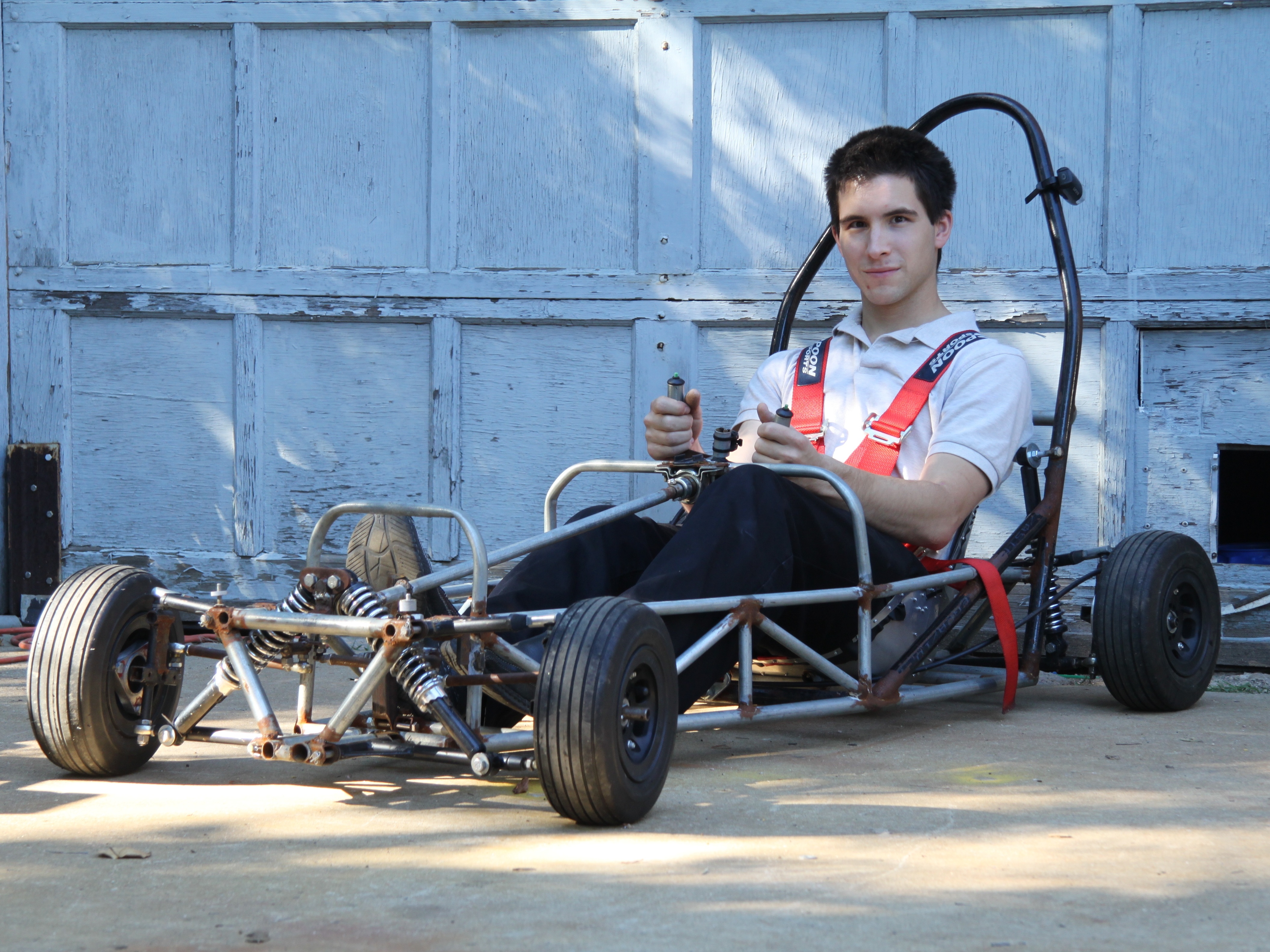This guide will teach you the basic design aspects you’ll need to consider in order to make yourself a road-worthy gravity-powered vehicle. Full suspension on go-kart wheels, driver restraints, a rigid frame with roll bar, and balanced drum brakes are features of the example kart I’ve built. It weighs in at under 100lb.
A variety of vehicles that may be built using the principles in this guide
You may, however, use the information in this article to make your own kart that looks different or incorporates some different features, as do the large variety of karts in the video above. This guide assumes basic experience with a wide variety of metalworking tools.


